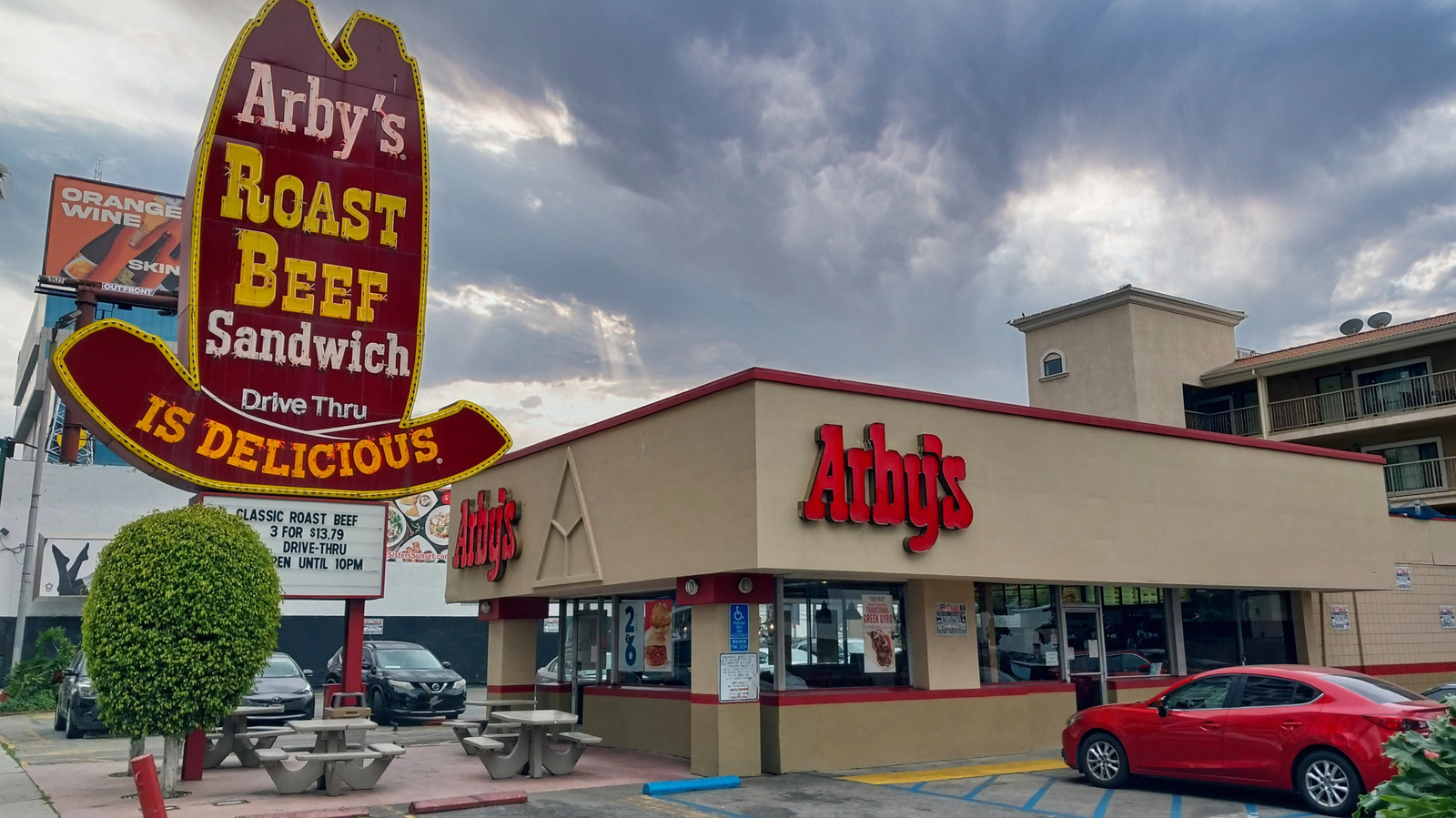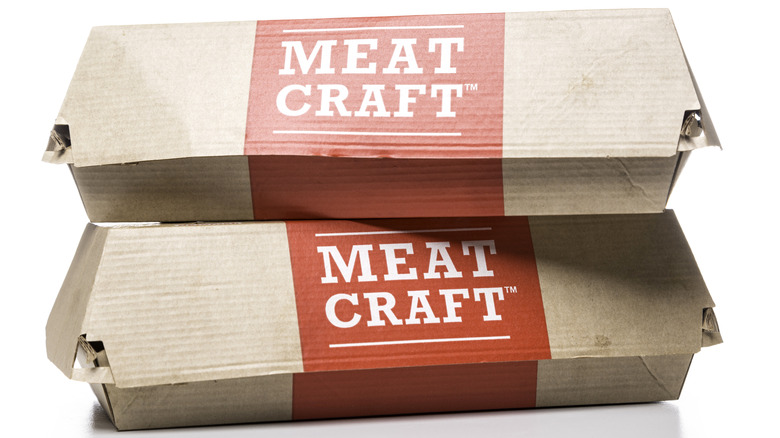In the mid-20th century, a pair of entrepreneurial brothers had a dream. They wanted to create a fast food chain just as successful as McDonald’s, but eschew the burger in favor of a different type of sandwich: roast beef. Since then, Arby’s has grown from a single location serving 69 cent roast beef sandwiches in Ohio to a global brand with more than 3,600 outposts. And that’s not even addressing its colorful history. While those are still nowhere near McDonald’s numbers, Arby’s has certainly solidified its place in the fast food market.
Over the years, the brand has experienced setbacks, successes, and plenty of surprising situations, including numerous ownership changes, unexpected rivals, and brutal mockery from comedians like Jon Stewart. Throughout it all, it’s never stopped “having the meats.” Today, Arby’s is best known for its roast beef sandwiches, two types of French fries, and ten-gallon cowboy hat decor. This a different look than what the Raffel brothers intended when they opened their first location in 1964. they envisioned it as a simple yet upscale alternative to burger-and-fries fast food behemoths.
The brothers, who had prior restaurant consulting experience, believed that customers would be willing to pay more for a premium offering like roast beef instead of greasy burgers, and priced their sandwich over four times higher than the 15 cents McDonald’s charged for a hamburger at the time. They named the restaurant Arby’s after their initials, “R,” for Raffel, and “B,” for brothers, which also happen to be the initials of “roast beef.” The first store was a hit, and soon they expanded rapidly — perhaps unwisely.
Expansion, decline, and ownership changes
In the late 1960s, the Raffel brothers quickly expanded their operation to encompass 300 roast beef restaurants across 40 U.S. states. They ran into trouble in 1970, however, when it became clear that their profit was outmatched by the capital it took to expand and the subsequent loans they owed. They tried to take the company public, but issues in the stock market dashed that option, and they were forced to file for Chapter 11 bankruptcy later that year.
Though the brothers were able to regain control of the company and restore its profitability, in 1976 they sold it to RC Cola (another company who never managed to reach the heights of its major competitor). The brothers stayed on with the company until their retirement in 1979.
Arby’s thrived in the mid-1980s through the early 1990s, after RC Cola was bought in a hostile takeover by notorious businessman Victor Posner and his holding company DWG. It was in this period that they first introduced their iconic Curly Fries, and though they didn’t invent the dish, they are widely credited for its popularization.
However, messy business practices behind the scenes meant that Arby’s changed hands once again to DWG successor Triarc Companies Inc. in 1994. The company tried a variety of questionable and ill-received marketing ideas over the next decade, including a more upscale restaurant concept called “Roast Town,” and a now-forgotten mascot of a talking oven mitt.
Revamping the reputation and turning mockery into memes
Did you know that Arby’s and Wendy’s were once owned by the same company? Triarc bought Wendy’s International, Inc. in 2008, and renamed itself Wendy’s/Arby’s Group, Inc. In 2011, however, Triarc decided to cut Arby’s out of the picture, and sold the majority of its shares in the chain to private equity firm Roark Capital Group, which owns Arby’s to this day through its multi-brand holding company, Inspire Brands. Inspire is also a majority owner of fast food enterprises like Sonic, Buffalo Wild Wings, Dunkin’, and Baskin-Robbins.
Following the change in ownership, Arby’s embraced a whole new marketing strategy, aimed at appealing to younger demographics through new menu items, including limited-time offers, nostalgic rereleases, and a winkingly self-deprecating sense of humor. In 2014, it adopted the cheeky slogan “We Have the Meats,” and hired actor Ving Rhames to voice its commercials. That same year, the company bought musician Pharell’s viral 10-gallon Grammy hat for $44,000 dollars, and now the official Arby’s merchandise shop sells its own $20 version of the hat.
Throughout the 2000s and 2010s, Arby’s was a reliable punchline for comedy shows like “Family Guy” and “The Daily Show” with Jon Stewart. Jokes about the chain’s quality and undesirableness were constantly aimed at its expense, but rather than get defensive, Arby’s embraced some of the negative comedic attention. When Jon Stewart left “The Daily Show” in 2015, Arby’s aired a special commercial showcasing his many insults, and thanking him for “being a friend.” Today, Arby’s humorous online presence is as essential to the brand as its signature sandwiches.






